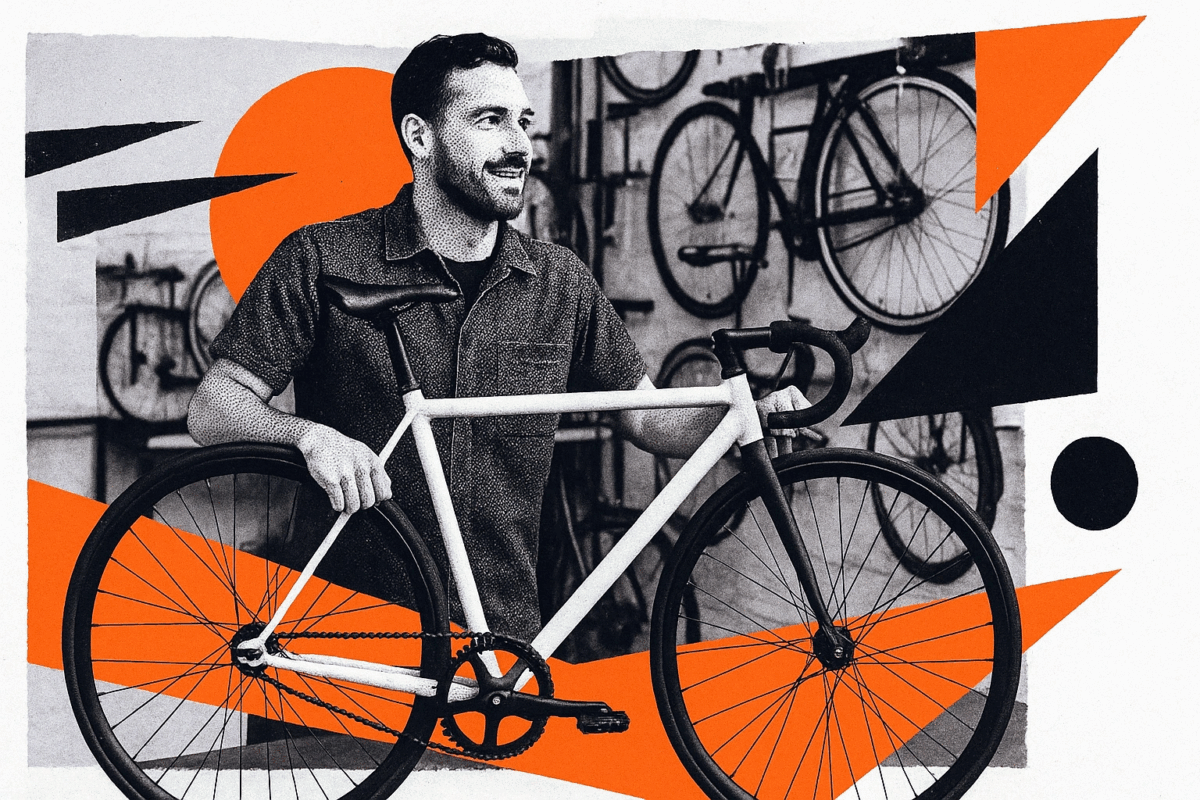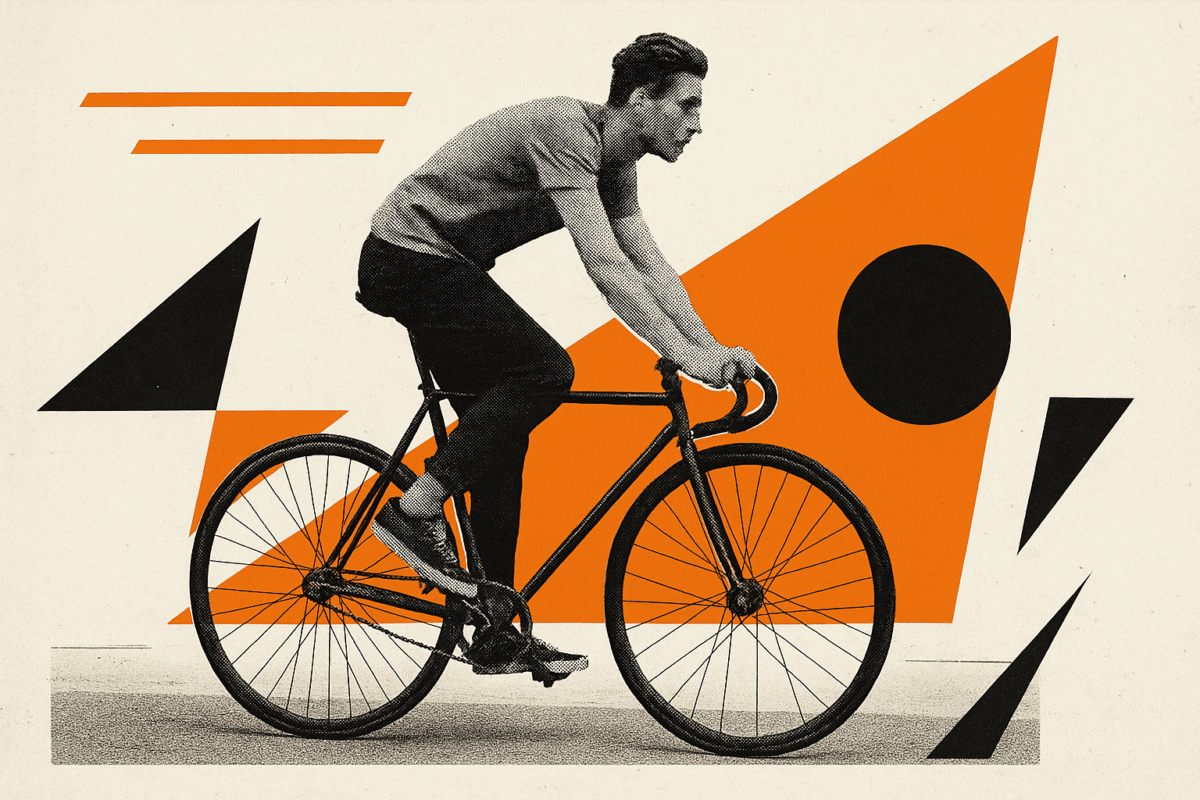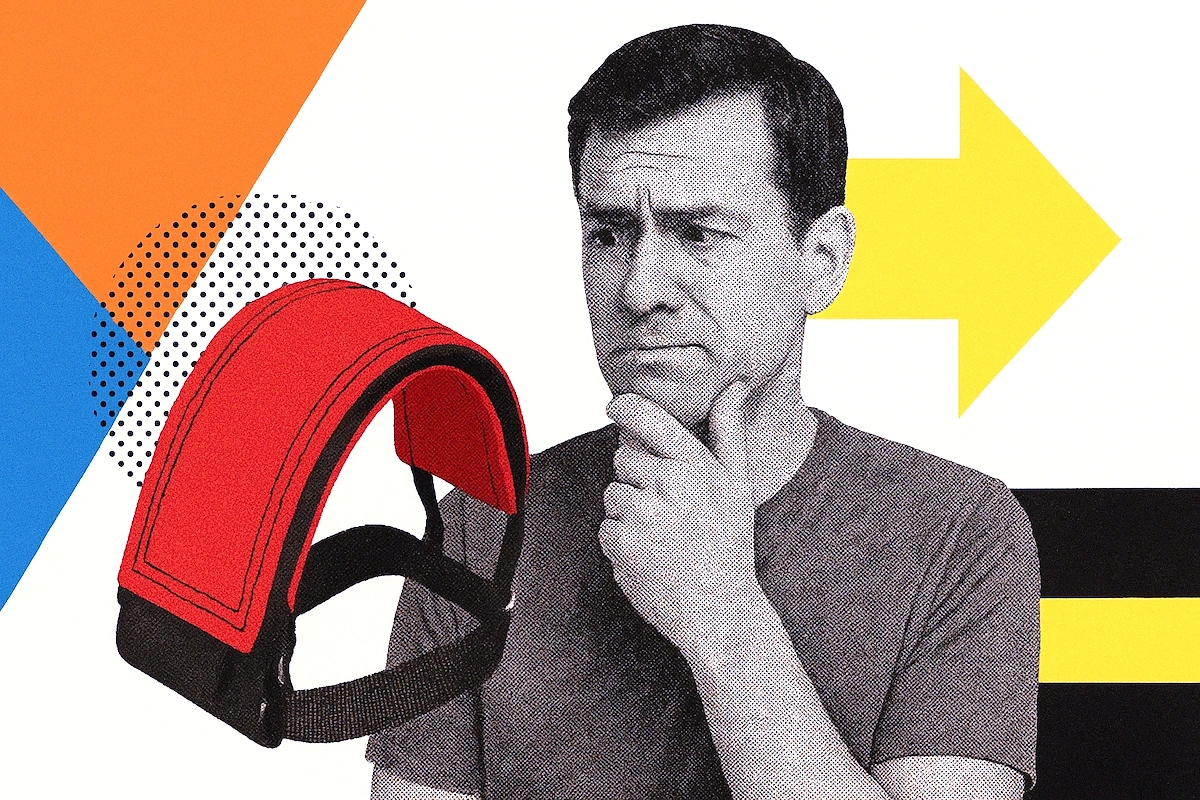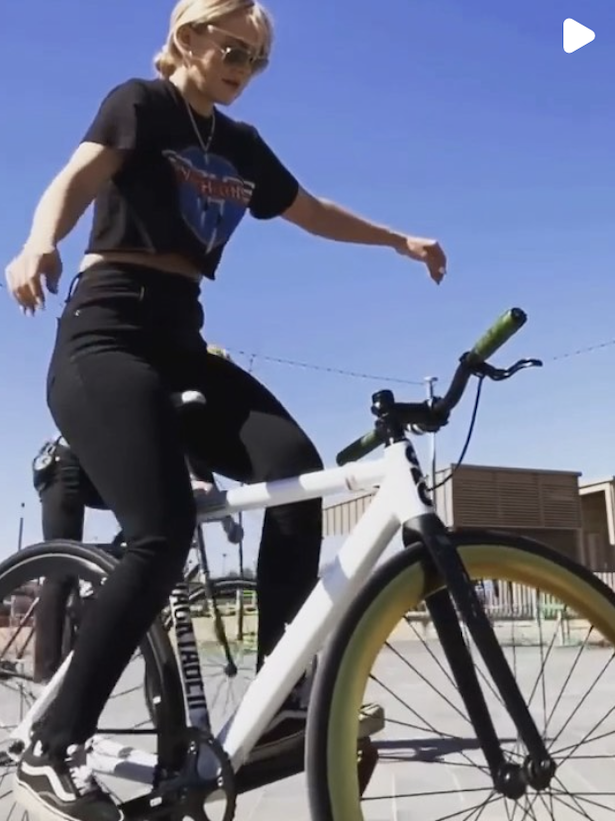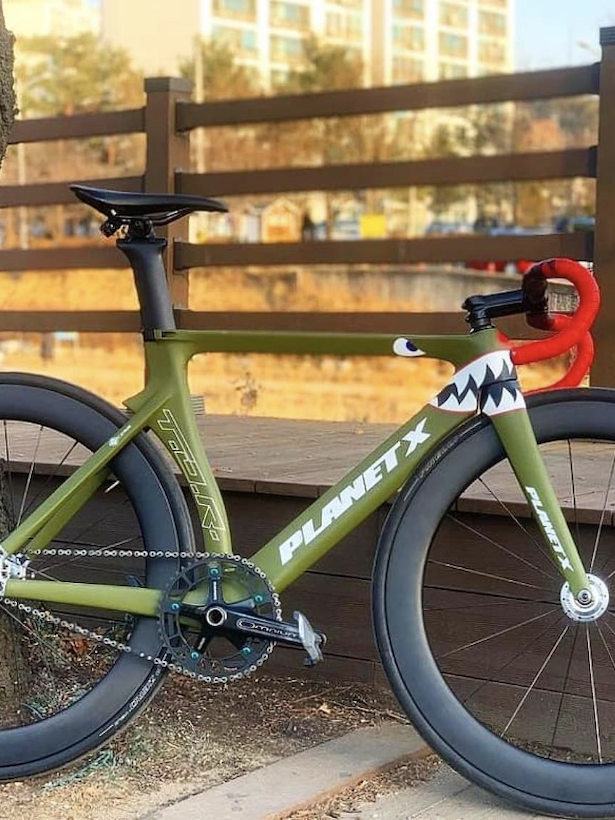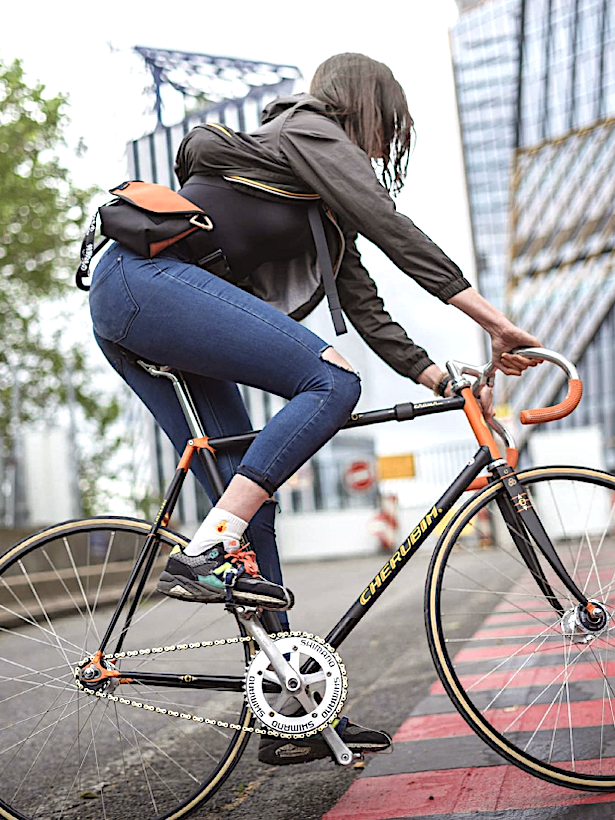
TL;DR:
- Mile-a-Minute Murphy hit 60 mph in 1899 riding behind a train on wooden planks
- The 100 mph barrier fell in 1941 when Alfred Letourneur hit 109 mph behind a race car
- Motor-paced record now stands at 183.9 mph set by Denise Mueller-Korenek in 2018
- Unpaced (pure human power) record is 89.6 mph in a streamlined recumbent
In 1899, a cyclist named Charles Murphy rode behind a speeding train at 60 mph 🤯. People thought he was insane. Today, the bicycle speed record stands at 183.9 mph—faster than most people drive on the highway.
Over the past 126 years, cyclists have risked their lives chasing speed records that seemed impossible in their eras ✋.
I’m taking you through the complete evolution of bicycle speed records—from steam locomotives to dragsters, from wooden boards to salt flats.
A video titled “65 MPH through the desert” from the SAFA Brian YouTube channel.
The Birth of Speed: Mile-a-Minute Murphy (1899)
Charles Minthorn Murphy had a crazy idea. He believed he could ride a bicycle at 60 mph—a mile a minute—if someone could eliminate wind resistance.
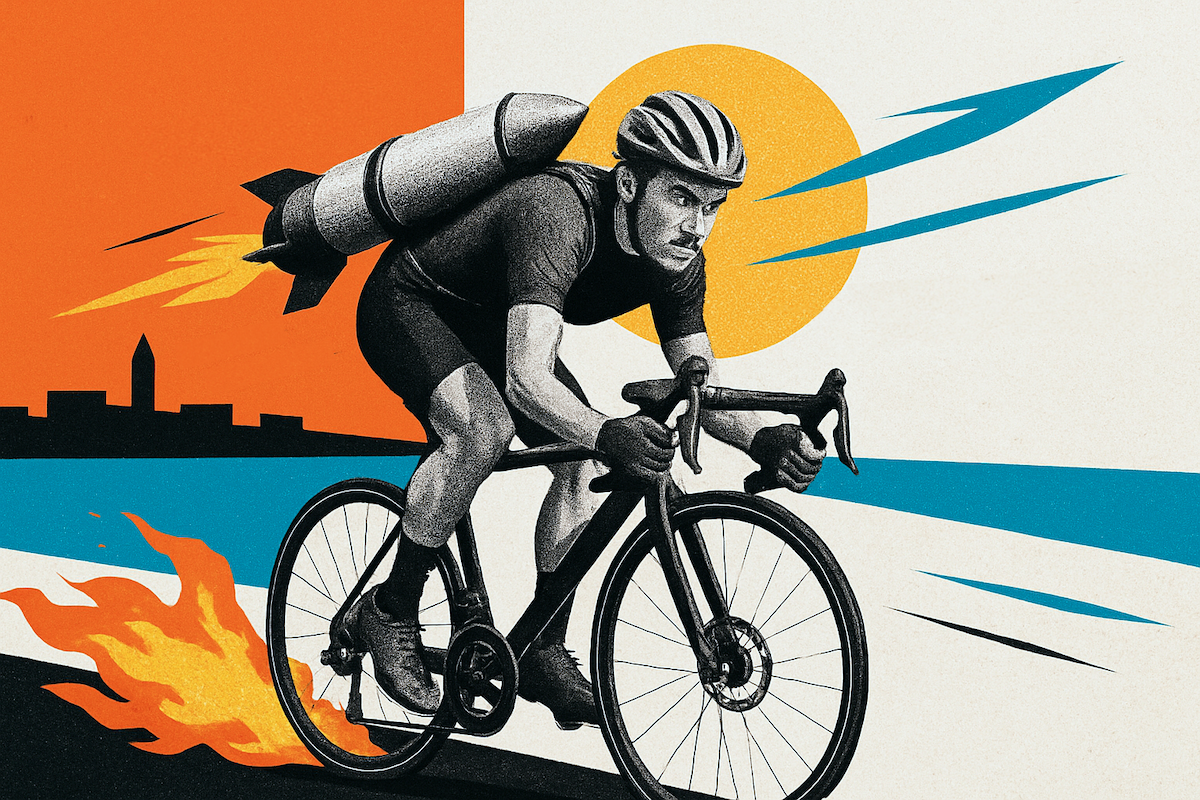
Everyone laughed at him. In 1899, the fastest bicycles could barely hit 20 mph. Murphy didn’t care. He convinced the Long Island Railroad to let him try something absolutely nuts.
On June 30, 1899, railroad workers laid two miles of wooden planks between the rails of track near Farmingdale, New York. They built a hood on the back of a passenger car to shield Murphy from wind. The plan? Murphy would pedal his Tribune “Blue Streak” bicycle in the dead air behind a speeding locomotive.

Murphy’s First Attempt Failed
The locomotive couldn’t maintain 60 mph. The weight of the train made the wooden track sink and rise like waves. Murphy was forced to ride an undulating surface while fighting to keep pace. He failed on his first attempt.
Murphy described the experience: “I was riding in a maelstrom of swirling dust, hot cinders, paper and other particles of matter. The suspense became maddening.”
On his second attempt with a more powerful engine, Murphy covered the mile in 57.8 seconds—averaging over 62 mph and likely hitting 70 mph at points.
Grown men on the train hugged and kissed each other. One fainted. Another went into hysterics.
Murphy had to be hauled onto the moving train immediately after crossing the finish line—there were only seconds to spare before the wooden track ended and exposed railroad ties would have destroyed him. He collapsed, ashen and burned from flying cinders.

Did you know?
Murphy’s record earned him the nickname “Mile-a-Minute Murphy” for the remaining 51 years of his life. He later became a New York City motorcycle cop and was inducted into the U.S. Bicycling Hall of Fame in 1991.
The Quest for 100 MPH (1920s-1941)
Murphy’s record stood for nearly 30 years. Nobody else had the combination of fitness, fearlessness, and access to steam locomotives fast enough to try.
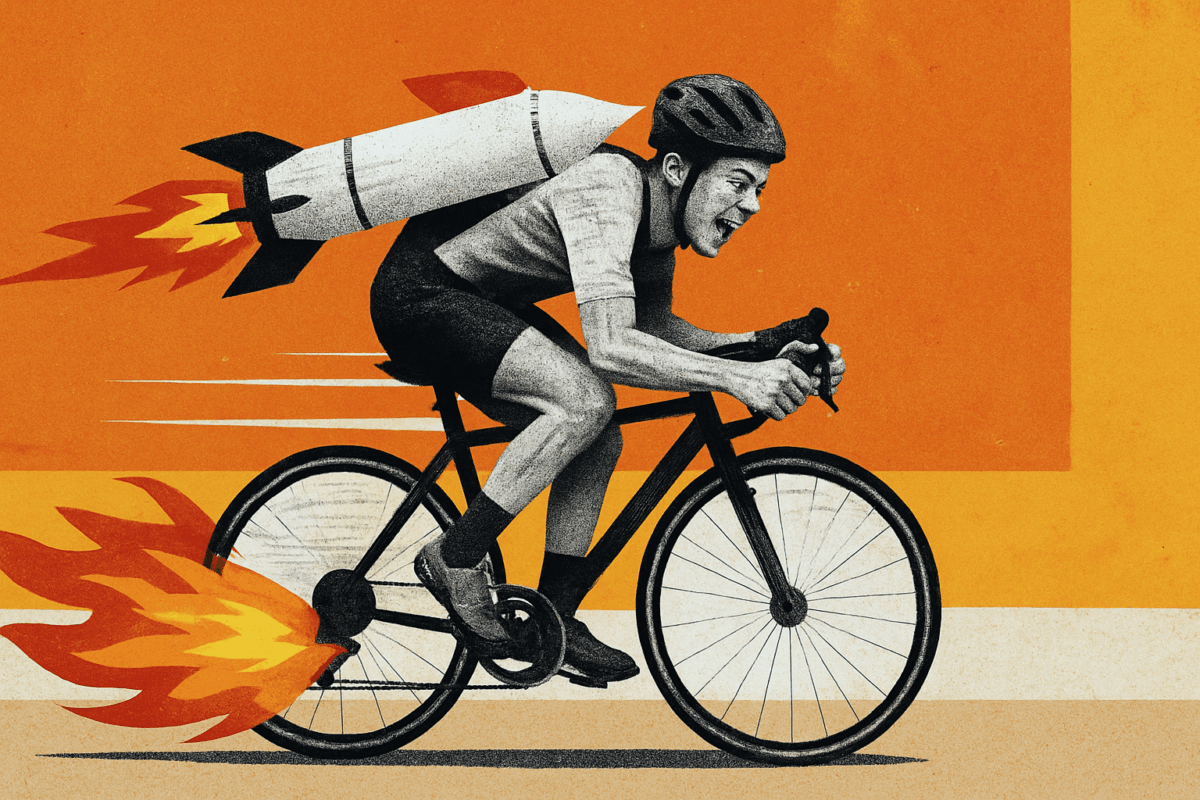
But by the 1920s, motorcycles and race cars could go much faster than trains. Cyclists started drafting behind motorized vehicles fitted with wind-blocking fairings. The speeds climbed rapidly:
- 1928: Leon Vanderstuyft (Belgium) – 76 mph behind a motorbike
- 1933: Alexis Blanc-Garin (France) – 80 mph behind a motorbike
- 1937: Albert Marquet (France) – 87 mph behind a car
- 1938: Alfred Letourneur (France) – 91 mph at a velodrome
Then came the breakthrough.
On May 17, 1941, Alfred Letourneur rode a Schwinn Paramount bicycle at 108.92 mph behind a specially equipped midget race car on Highway 99 near Bakersfield, California. Cycling had finally cracked the 100 mph barrier.
Letourneur—nicknamed “le diable rouge” (the Red Devil)—became the first human to ride a bicycle faster than 100 mph under any conditions. The record would stand for decades.
The Modern Era: Bonneville Salt Flats (1970s-Present)
By the 1970s, speed record attempts moved to the Bonneville Salt Flats in Utah—a vast, flat expanse perfect for high-speed runs. Cyclists now drafted behind dragsters with custom wind shields.
The progression continued:
- 1973: Allan Abbott – 139 mph at Bonneville
- 1985: John Howard – 152 mph at Bonneville
- 1995: Fred Rompelberg (Netherlands) – 167 mph at Bonneville
Rompelberg’s record lasted 23 years. It seemed untouchable. The Dutchman had crashed twice going over 100 mph in 1988, breaking 24 bones, before returning in 1995 with his custom 1,000-horsepower dragster.
Then a 45-year-old mother from California decided to break it.
The Current Record: 183.9 MPH (2018)
Denise Mueller-Korenek was a national champion cyclist who had retired to run a home security business and raise a family. But she never stopped thinking about speed.
In 2016, she set the women’s record at 147 mph. But that wasn’t enough.
On September 16, 2018, Mueller-Korenek returned to Bonneville with Rompelberg’s restored dragster and a custom KHS bike. The bike was over 7 feet long, weighed 35 pounds, and had 17-inch motorcycle tires.
The gear ratio was 488 gear-inches—so high she had to be towed to 100 mph before she could even turn the cranks.

The Danger Was Real
The dragster created a small pocket of calm air. If Mueller-Korenek drifted even slightly left or right, she’d drop out of that pocket into a hurricane-force headwind that would throw her off the bike. At 180+ mph, that meant certain death.
Mueller-Korenek described it as “a dance” with her driver, Shea Holbrook: “I’m constantly adjusting, floating forward and floating back. Everything is just white with no reference points. It’s like being in the back of a box truck with no windows.”
She covered the measured mile at 183.932 mph—faster than the takeoff speed of an Airbus A340. The equipment barely survived.
Five days later, the flange on the rear hub completely popped off. One side of the rear wheel just snapped off the hub.
Mueller-Korenek had shattered a 23-year-old record and become the fastest human ever to ride a bicycle under their own power.
Pure Human Power: The Unpaced Records
Motor-paced records are impressive, but they rely on eliminating wind resistance. What about pure human power with no help from slipstreams?
That’s where streamlined recumbent bicycles come in—enclosed in aerodynamic shells that look more like torpedoes than bikes.
The progression:
- 2009: Sam Whittingham (Canada) – 82.8 mph
- 2013: Sebastiaan Bowier (Netherlands) – 83.1 mph
- 2015: Todd Reichert (Canada) – 86.7 mph
- 2016: Todd Reichert – 89.59 mph
Reichert’s record was set at Battle Mountain, Nevada—a location chosen for its elevation and thin air. His vehicle was the “Eta Speedbike,” built by the AeroVelo team (the same group that built the first human-powered helicopter).
For context, that’s nearly 90 mph with nothing but leg power and aerodynamics. No motor. No slipstream. Just pure human output.
Downhill Speed Records: When Gravity Helps
There’s another category: gravity-assisted downhill records. These happen on snow-covered ski slopes or volcanic ash, where riders can reach insane speeds going straight down mountains.
| Year | Rider | Speed | Surface |
|---|---|---|---|
| 1999 | Markus Stöckl | 116 mph | Snow (production bike) |
| 2007 | Markus Stöckl | 130 mph | Chilean volcano ash |
| 2015 | Éric Barone | 138.8 mph | French ski resort snow |
| 2017 | Éric Barone | 141.5 mph | Vars ski resort, France |
Éric Barone’s 141.5 mph run down a ski slope is terrifying to watch. One mistake, one patch of ice, one moment of panic—and it’s over. These riders wear motorcycle leathers and full-face helmets because crashes at these speeds are catastrophic.
The Bikes That Make It Possible
These record bikes are nothing like what you ride. They’re purpose-built machines designed for one thing: surviving extreme speed.
Motor-Paced Bikes
- 7+ feet long for stability
- 17-inch motorcycle tires rated for 250+ mph
- Carbon fiber 5x thicker than normal bikes
- Gear ratios around 488 gear-inches
- Steering stabilizers to prevent death wobble
Unpaced HPVs
- Fully enclosed aerodynamic shells
- Recumbent position for minimal frontal area
- Ultra-light carbon fiber construction
- Designed in wind tunnels
- Look like torpedoes with wheels
Mueller-Korenek’s bike alone cost hundreds of thousands of dollars to develop. The dragster she rode behind? Fred Rompelberg’s custom 1,000-horsepower machine that had been sitting in storage since 1995.
Frequently Asked Questions
Possibly. The theoretical limit is around 200 mph with current technology. Beyond that, the mechanical stress on bike components becomes extreme, and human power output becomes the limiting factor. Mueller-Korenek’s bike started failing just days after the record.
The cyclist is still generating all the power through the pedals. The pace vehicle only eliminates wind resistance—it provides no propulsion. These records measure the absolute maximum speed possible when wind resistance is removed.
Extremely. Multiple riders have died attempting motor-paced speed records. Fred Rompelberg broke 24 bones in crashes before his successful 1995 run. Any mistake at 150+ mph is likely fatal, which is why record attempts require years of preparation and specialized safety equipment.
The downhill record on a production mountain bike is 130 mph set by Markus Stöckl in 2007. On flat ground with no drafting, elite sprinters can briefly hit 45-50 mph. Tour de France pros average around 31 mph during the fastest stages on flat terrain.
Final Thoughts
From Charles Murphy’s 60 mph ride behind a steam locomotive in 1899 to Denise Mueller-Korenek’s 183.9 mph dragster run in 2018, bicycle speed records represent 126 years of humans pushing the absolute limits of what’s possible on two wheels.
These aren’t everyday cyclists. These are obsessives who risk everything for a number—who spend years training, hundreds of thousands of dollars developing equipment, and face life-or-death consequences for a few seconds of glory.
The question “how fast can a bike go?” doesn’t have a single answer. It depends on the bike, the conditions, and how much someone is willing to risk. But one thing’s certain: we haven’t hit the limit yet.
Sources and References
- Wikipedia – Charles Minthorn Murphy
- Wikipedia – Alfred Letourneur
- Guinness World Records – History of Cycling Speed Records
- NPR – Woman Rides Bicycle to 183.9 MPH
- Wikipedia – List of Cycling Records
- Bicycling Magazine – Denise Mueller-Korenek Breaks Record
- Sports Illustrated – Mile-a-Minute Murphy
- Podium Cafe – The Legend of Mile-a-Minute Murphy






